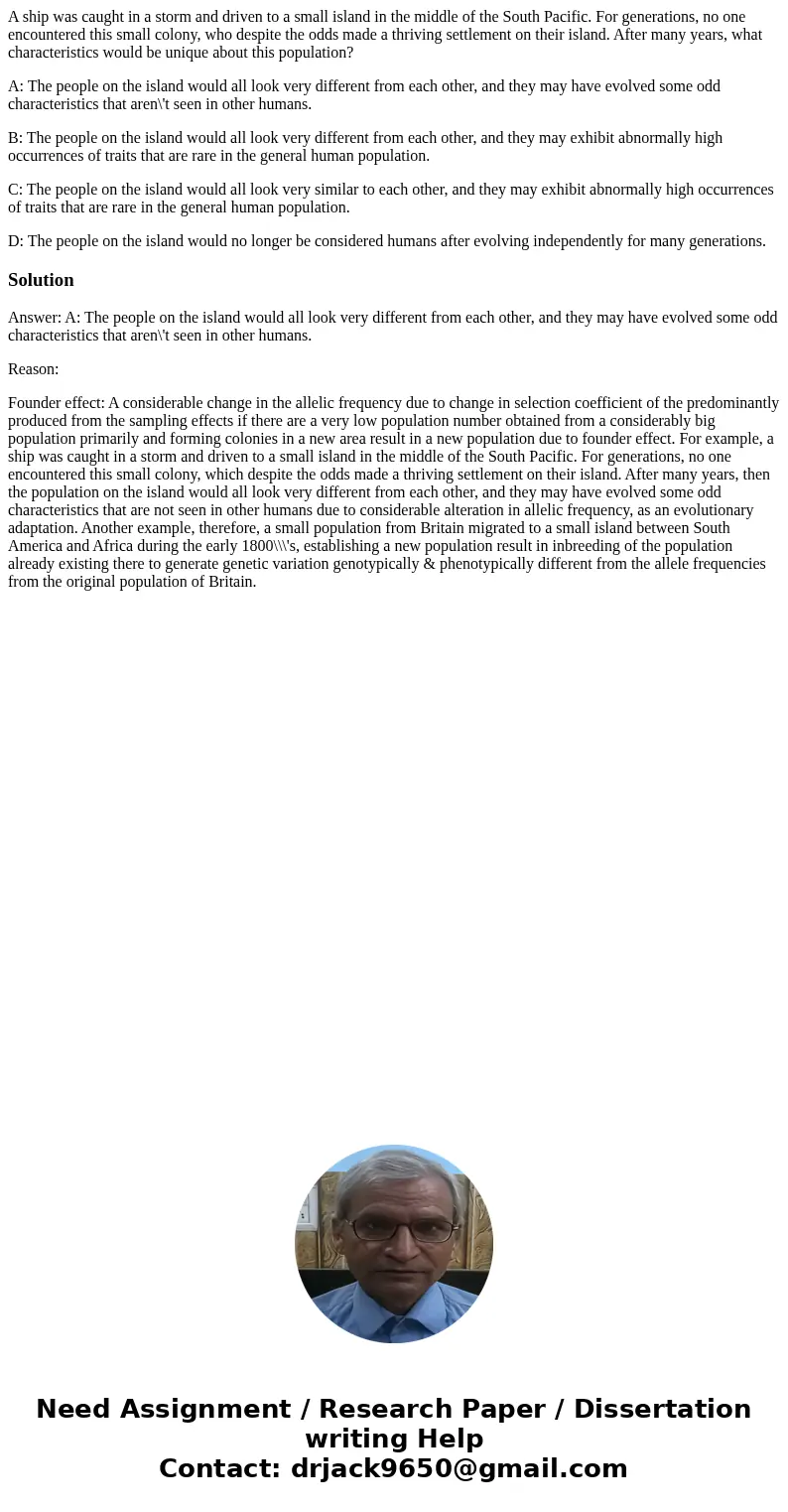A ship was caught in a storm and driven to a small island in
A ship was caught in a storm and driven to a small island in the middle of the South Pacific. For generations, no one encountered this small colony, who despite the odds made a thriving settlement on their island. After many years, what characteristics would be unique about this population?
A: The people on the island would all look very different from each other, and they may have evolved some odd characteristics that aren\'t seen in other humans.
B: The people on the island would all look very different from each other, and they may exhibit abnormally high occurrences of traits that are rare in the general human population.
C: The people on the island would all look very similar to each other, and they may exhibit abnormally high occurrences of traits that are rare in the general human population.
D: The people on the island would no longer be considered humans after evolving independently for many generations.
Solution
Answer: A: The people on the island would all look very different from each other, and they may have evolved some odd characteristics that aren\'t seen in other humans.
Reason:
Founder effect: A considerable change in the allelic frequency due to change in selection coefficient of the predominantly produced from the sampling effects if there are a very low population number obtained from a considerably big population primarily and forming colonies in a new area result in a new population due to founder effect. For example, a ship was caught in a storm and driven to a small island in the middle of the South Pacific. For generations, no one encountered this small colony, which despite the odds made a thriving settlement on their island. After many years, then the population on the island would all look very different from each other, and they may have evolved some odd characteristics that are not seen in other humans due to considerable alteration in allelic frequency, as an evolutionary adaptation. Another example, therefore, a small population from Britain migrated to a small island between South America and Africa during the early 1800\\\'s, establishing a new population result in inbreeding of the population already existing there to generate genetic variation genotypically & phenotypically different from the allele frequencies from the original population of Britain.

 Homework Sourse
Homework Sourse